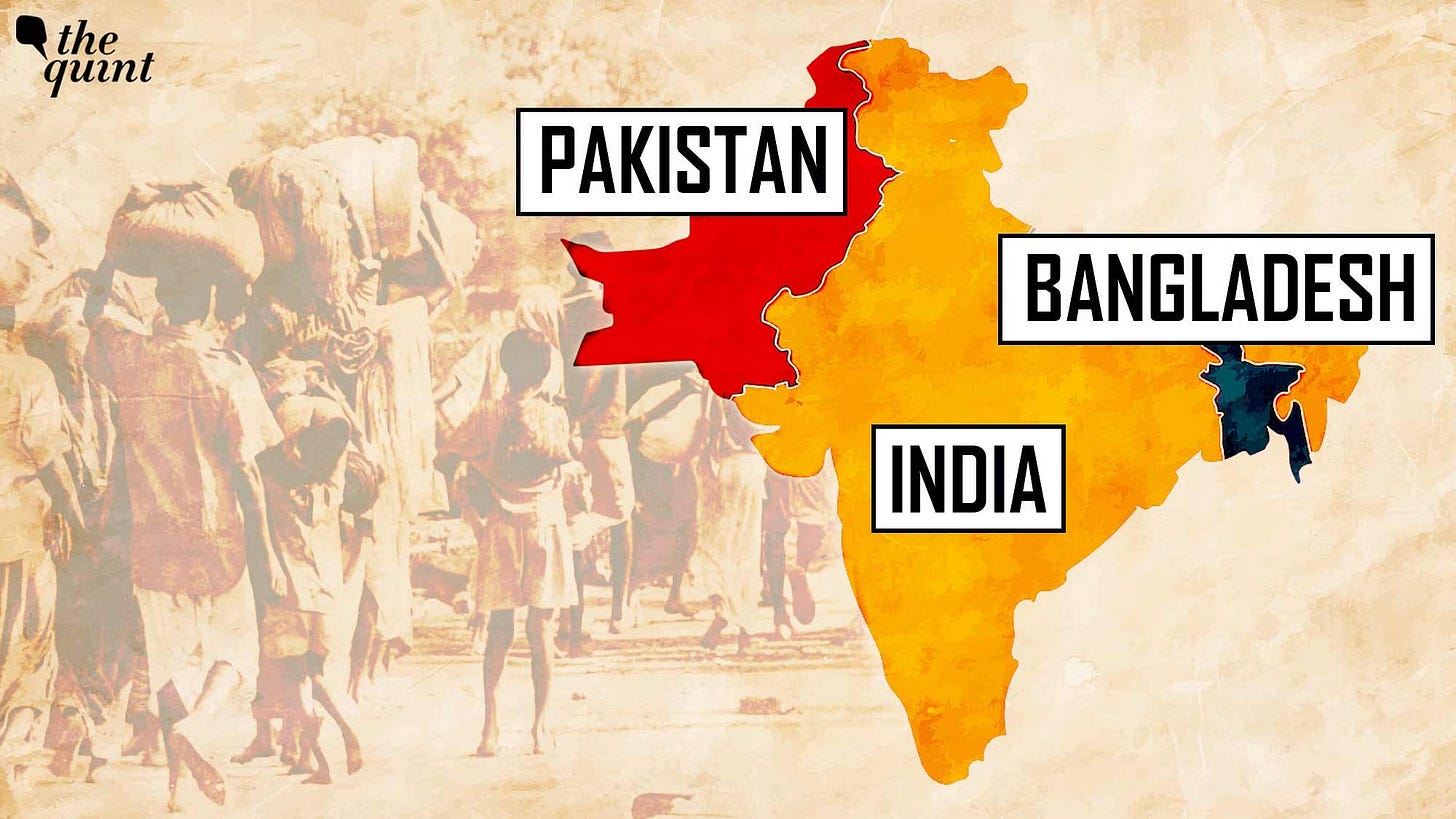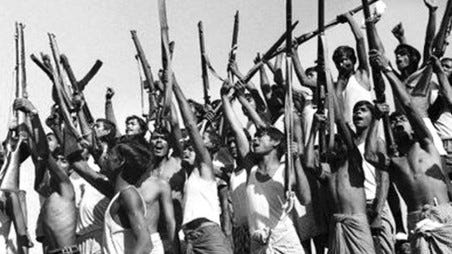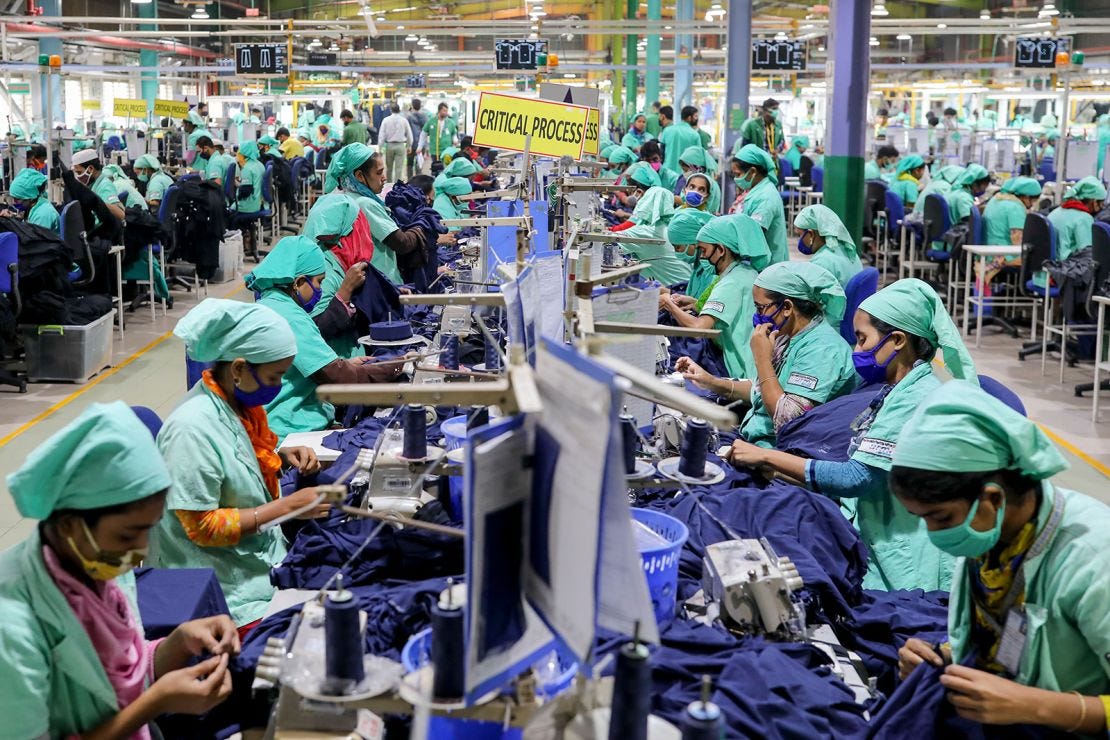A few days ago…. the Prime Minister of Bangladesh (Sheikh Hasina) was forced to resign, get on a military aircraft and flee the country immediately. She is currently in Delhi, awaiting asylum from the UK.
A few weeks ago… student groups in Bangladesh began protesting across the country. What started as peaceful protests turned violent. Police have been tried to break up the crowds. In the ensuing mayhem, many were hurt.
A few years ago…More than 30 million people in Bangladesh were unemployed. But government jobs are not available to a vast majority of these people. These jobs were mostly reserved for families who fought for the country’s independence.
The student protests of a few weeks ago began as a response to the unfair jobs quota. The story of what’s going on in Bangladesh began not a few weeks or years ago, but in 1971. Read on….
Every week on ‘Lighter Side’, I write about one story about the current events shaping our world. This week’s story traces the 50+year old origin story of the current chaos in Bangladesh.
Part 1 - When it all began
The Indian subcontinent may have had an ancient civilisation. But its history is quite modern. India and Pakistan came into being in 1947 when the British were sent packing home. The Brits had divided the country in one of the most bizarre manners possible. They left Bangladesh as part of Pakistan (it is the dark region on the right side of the map below). Bangladesh was separated from Pakistan by several thousands of miles of Indian terrain. Sending letters across different parts of the newly formed Pakistan was a nightmare. Sending armies and troops even more so.
The Bangladeshis did not like how matters stood. It did not help that the Pakistanis adopted a high-handed manner towards the Bangladeshis. The young and the old alike, in Bangladesh, got their forces together. They fought for their independence from Pakistan and the struggle carried on for a few years.
Until 1971.
Bangladesh’s freedom fighters stood face to face and fought against the forces of the Pakistani army. They won. (It also helped that India sent its troops to support Bangladesh’s freedom fighters). The country was born on March 26, 1971.
At the time Bangladesh was born, it was extraordinarily poor. The freedom fighters had suffered untold miseries at the hands of the Pakistani army. The leader of their freedom movement (a man called Sheikh Mujibur Rahman) decided to compensate the freedom fighters by allocating 30% of the jobs in the government to them. This was seen as fair compensation to the patriots who had suffered for the sake of their country.
Years passed. A new law came into existence that allowed descendants (children / grand children / great grand children and so on) of the freedom fighters to be eligible for the 30% reservation in government jobs. This wasn’t considered so cool, but not too many objected to it. Atleast not immediately.
The rest of the country was busy making a living in one of the many bustling factories in the country. Bangladesh was slowly becoming one of the fastest growing countries in Asia (it is one of the largest garment exporters in the world and its factories kept buzzing for many decades). Students were confident that they would secure fair income even if the government jobs were not available to them.
Part 2 - When things began to sour
But like all great stories, the great income story of Bangladesh too slowly drew to a grinding halt. The textile exports began to decline by 2016. Not too many jobs opened up inside Bangladesh. There were kids who saw that some of their neighbours secured government jobs. All because their grandparents had been a part of a struggle almost 50 years earlier. That seemed weird. And unfair. And annoying.
Students took to the streets. The first great protests against government jobs’ reservation began in 2018. The Prime Minister of Bangladesh - a lady called Sheikh Hasina, decided to put an end to all the quotas in government jobs. She bought herself and her country some quiet time. But the guns of Russia would soon begin to roar in their ears.
Far far away, in Feb 2021, as tanks rolled and armies marched across the borders of Ukraine, Bangladesh’s textile factories began to feel the pinch. Europe got busy spending money on weapons and ammunition to support Ukraine. Their economies were under a lot of stress and Europeans did not have a lot of money left to buy clothes manufactured by Bangladesh.
Garment factories in Bangladesh sent their workers home. Everyone was under stress to find work as jobs had thinned down in the country. The children and grandchildren of freedom fighters thought it was time to take matters into their hands. While they had stayed quiet in 2018 after the job reservations had been abolished, time had now come for desperate measures.
They sued Sheikh Hasina’s government in the court. In June 2024, the High Court declared that jobs’ reservations had to come back. Taking them away didn’t make sense. Freedom fighters’ children rejoiced.
The rest of the country did not. Students took to the streets. They held placards. Shouted slogans. They wanted the job reservations to go away. The protests were peaceful. The government let the protests continue and the police did not intervene. Roads had more protesters than cars. But life went on quietly. And with lesser fossil fuel emissions. Till July 2024.
Part 3 - the final act
Two weeks ago, the Prime Minister Sheikh Hasina addressed a public rally. When she was asked a question as to why the jobs quota should be there, she said ‘If the descendants of freedom fighters do not get government jobs, who else should we give it to? Should the children of the RAZAKARS get them?’
Unless you are a Bangladeshi reading this, you’re likely to open a new google tab to look up the word ‘razakar’. Razakar is one of the most derogatory words used to insult someone in Bangladesh. It refers to traitors - people who supported Pakistan in the 1971 war. These razakars were said to have betrayed Bangladeshi freedom fighters.
This was enough for violent forces to join the protest. It is alleged that elements from Pakistan have played a role in fanning the violence in Bangladesh. Allegedly, Pakistan supported student groups joined the mayhem. Clashes began. Destruction of public property came soon after. Supporters of Sheikh Hasina also took matters into their hands (when there aren’t jobs to go to, people do a lot of taking matters into their hands). Things got ugly. Nearly 200 protesters were killed. Thousands more were injured.
As violence spiralled, the Supreme Court of Bangladesh jumped in to restore order. It scaled down all reservations to 5%. But, this ruling did nothing to calm the nerves. Once a mob frenzy sets in, all hell breaks loose. Logic usually sits quietly in a corner waiting for its turn.
45 minutes to escape
The PM Sheikh Hasina responded to the protests (allegedly incited by Pakistan’s intelligence agencies to destabilise Bangladesh) with force. Hundreds were injured by the police and quite a few locked up in jail. She hoped that such strong measures would put an end to this. Turns out her calculation was wrong. Scores of people began marching towards her residence on Monday morning. They demanded - that the PM resign.
On Monday morning (Aug 5, 2024), the PM (Sheikh Hasina) convened a meeting of the police and armed forces. ‘Ma’am, please leave now. The situation is untenable and your life is at risk.’
She did just that. Wrote her resignation letter. Boarded a military aircraft along with her sister. Sought permission and refuge in Delhi from the Indian government. Within a few minutes, her aircraft received clearance to enter Indian airspace. As of 10 Aug, 2024, she is in Delhi, awaiting asylum from the UK.

Podcast this week
For the first time ever, a dog (4-year old Golden Retriever) joins the US Olympics Gymnastics team as part of the official team. It will play an important role in ensuring a high performance of the team. Can you guess what this dog will do?
Two primary schoolers Anindya and Agastya solve this puzzle. Their answers range from the dog being a part of a pyramid-style structure that the team will form, to the dog being responsible for sniffing and finding lost objects to save everyone time. Listen to the full episode to find out what this dog will do at the Paris Olympics.

There are three link buttons at the bottom of each post: Like, Share, and Comment.
It would be so great if you clicked on any one! Your participation helps me reach more people, and allows me to know you’re reading this newsletter.'








